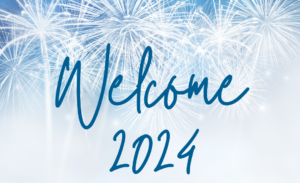Simplicity is hard.
Well, it may not solve everything, but stop and think about how complexity gets in the way of so much of what we do. Organizations are confusing, strategies are misunderstood and the customer experience is disjointed.
It turns out that simplicity is hard. It’s easier to bolt on the new technology to the old version, add four more slides to the 72 page slide deck and narrow down to the top 25 critical initiatives for 2013. Finding the simple truth is difficult and so we punt.

Simplicity takes clarity, honesty, unbelievable discipline and intelligence. Any one of these alone can stop us dead in our tracks – much less all together. It often takes more than one person to achieve simplicity. And, oh by the way, we have a deadline.
There are little examples of how we miss simplicity every day. The leader that talks for 90 minutes about the new strategy, yet no one knows exactly what he just said. The process that is so confusing the customer can never reach the right person to solve her problem. The 10 page performance feedback document, yet at the end the employee has to ask, ‘so how did I do this year?’
Simplicity Takes Empathy.
In my quest to embrace simple, I picked up a new book by Siegel and Etzkorn, “Simple: Conquering the Crisis of Complexity.” I recommend it.
Siegel and Etzkorn believe there are three key principles of simplicity:
- Empathize: understand others’ needs and expectations
- Distill: boil down and customize what’s being offered to meet needs
- Clarify: make the offering easier to understand, use and benefit
You have to empathize to achieve simplicity. I read this three times. Distill and clarify were more intuitive, but empathize made me connect two important ideals I had never connected before. You can’t realize simplicity if you don’t empathize with your audience.
The best task force survey or detailed process analysis isn’t enough. You need empathy to realize simplicity.
This is why Steve Jobs simplified how we listen to music and acquire it and we followed. And, he never held a focus group to ask customers what features they wanted. He was a minimalist who went for simple, not simplified.
Our roadblocks to simplicity.
In addition to just being easier, complexity makes us feel smarter. If Joe has to explain his complex process two to three times to the team, he looks smarter! He is valued and important!
As a consultant, I can say confidently that some of the “best practice” thinking in organizations today was built with a heavy influence from consultants and experts who added complexity. And, oh by the way, the side benefit was to sell more services. (See competency models.)
Silos – which are alive and well in business – perpetuate the complexity. While each silo is busy getting “better” (and more complex) the overall business process, purpose and experience has lost a clear, simple purpose to the end user or customer.
What can we do?
If we have a complexity crisis, what can we do about it? We can be the advocates for going “back to the basics” on what is really needed and only adding to it when it must be done. We can be the simplicity champions searching for answers to:
- What’s the real purpose?
- How do our customers/audience experience us and how can we simply meet their needs?
- Why do we need it?
- What is the simplest way we can do this?
- How can we get a fresh perspective to be sure we have the simplest approach?
- How can I say this in simpler language?
Our work, organizations and connection to our audience and customer can be so improved with a passion for simplicity. I’m for making it the universal core value. It’s that important.
And when you think simple is for simple minds, I’ll quote, Siegel and Etzkorn, “Simple is smart.”
Patti Johnson is the CEO of PeopleResults and can be followed on twitter @pattibjohnson or her company @people_results.



